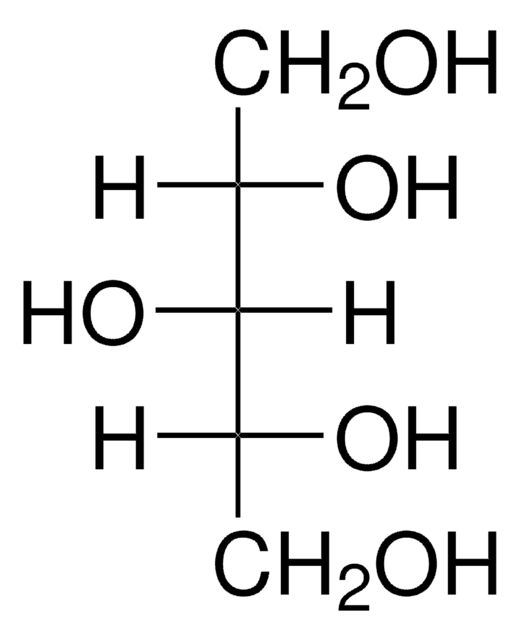S1000000
Sorbitol
European Pharmacopoeia (EP) Reference Standard
Synonym(s):
D-Sorbitol, D-Glucitol
About This Item
Recommended Products
grade
pharmaceutical primary standard
vapor density
<1 (vs air)
vapor pressure
<0.1 mmHg ( 25 °C)
API family
sorbitol
manufacturer/tradename
EDQM
mp
98-100 °C (lit.)
application(s)
pharmaceutical (small molecule)
format
neat
SMILES string
OC[C@@H](O)[C@@H](O)[C@H](O)[C@@H](O)CO
InChI
1S/C6H14O6/c7-1-3(9)5(11)6(12)4(10)2-8/h3-12H,1-2H2/t3-,4+,5-,6-/m1/s1
InChI key
FBPFZTCFMRRESA-JGWLITMVSA-N
Looking for similar products? Visit Product Comparison Guide
General description
For further information and support please go to the website of the issuing Pharmacopoeia.
Application
Established for the preparation of the below-given solutions as per European Pharmacopoeia:
- Reference solutions (a) and (b) in the identification by thin-layer chromatography (General text 2.2.27) and testing for related substances and assay using liquid chromatography (General text 2.2.29) of sorbitol, according to the monograph 0435
- Reference solutions (a) in the assay of sorbitol liquid (crystallizing), sorbitol liquid (non-crystallizing), and sorbitol, liquid, partially dehydrated using liquid chromatography (General text 2.2.29), according to the monographs 0436, 0437, and 2048 respectively
- Reference solutions (b) in the identification and assay of maltitol, liquid using thin-layer chromatography (General text 2.2.27), and liquid chromatography (General text 2.2.29), according to the monograph 1236
Packaging
Other Notes
related product
Storage Class Code
11 - Combustible Solids
WGK
WGK 1
Flash Point(F)
Not applicable
Flash Point(C)
Not applicable
Choose from one of the most recent versions:
Certificates of Analysis (COA)
Sorry, we don't have COAs for this product available online at this time.
If you need assistance, please contact Customer Support.
Already Own This Product?
Find documentation for the products that you have recently purchased in the Document Library.
Customers Also Viewed
Our team of scientists has experience in all areas of research including Life Science, Material Science, Chemical Synthesis, Chromatography, Analytical and many others.
Contact Technical Service






